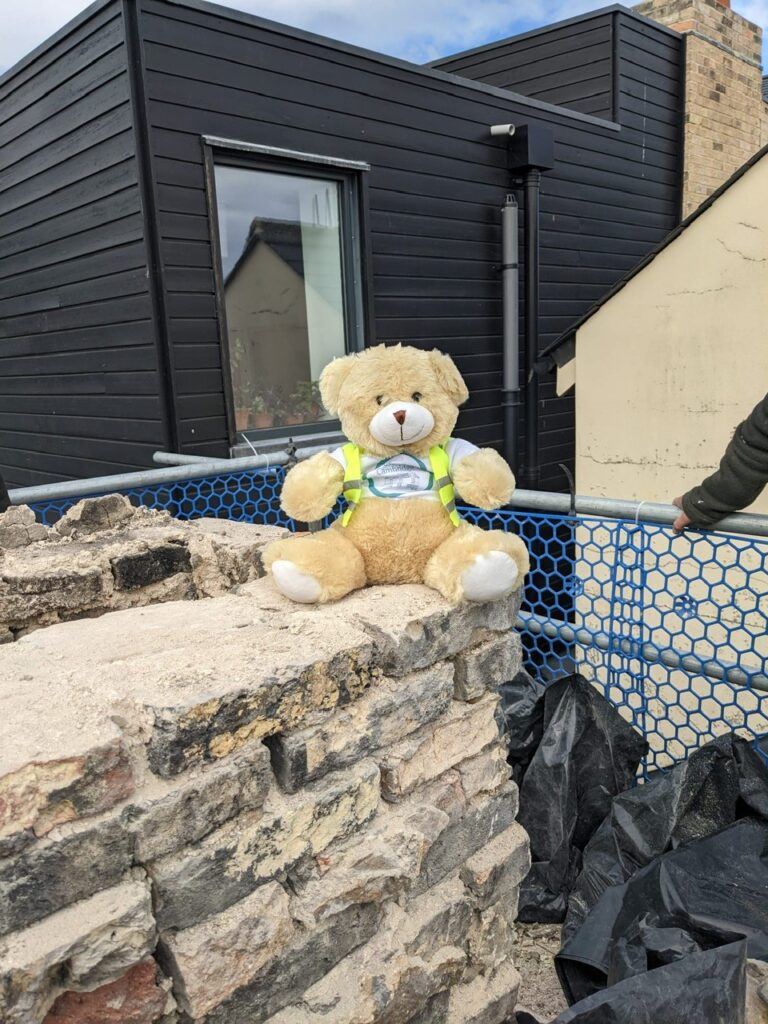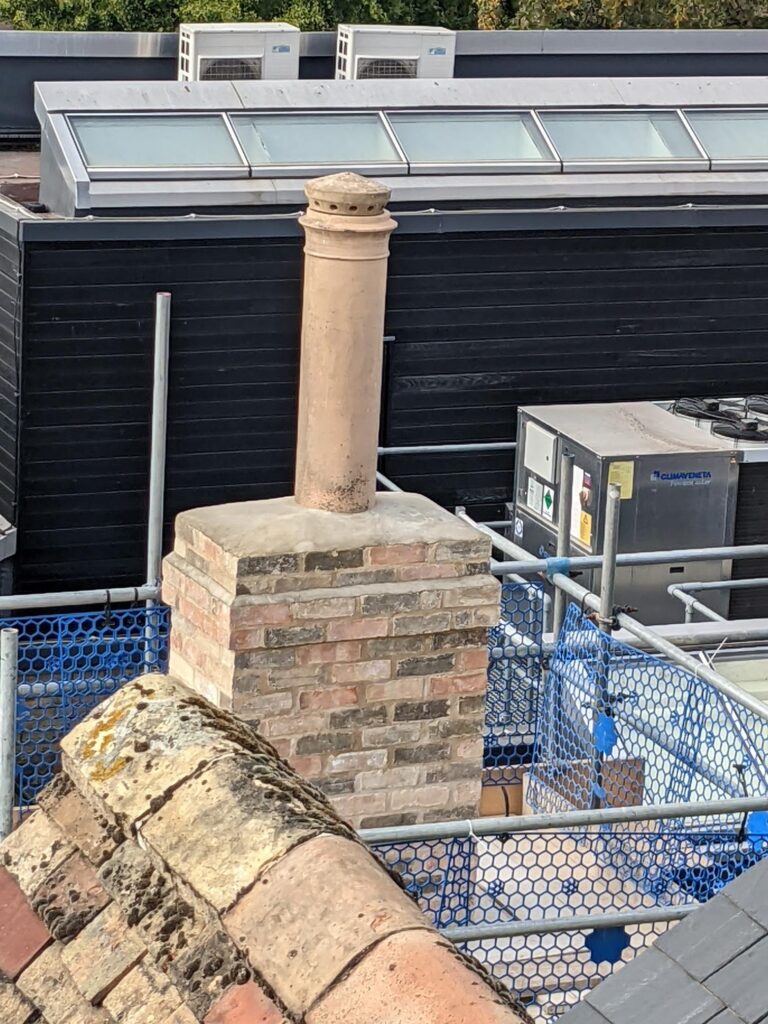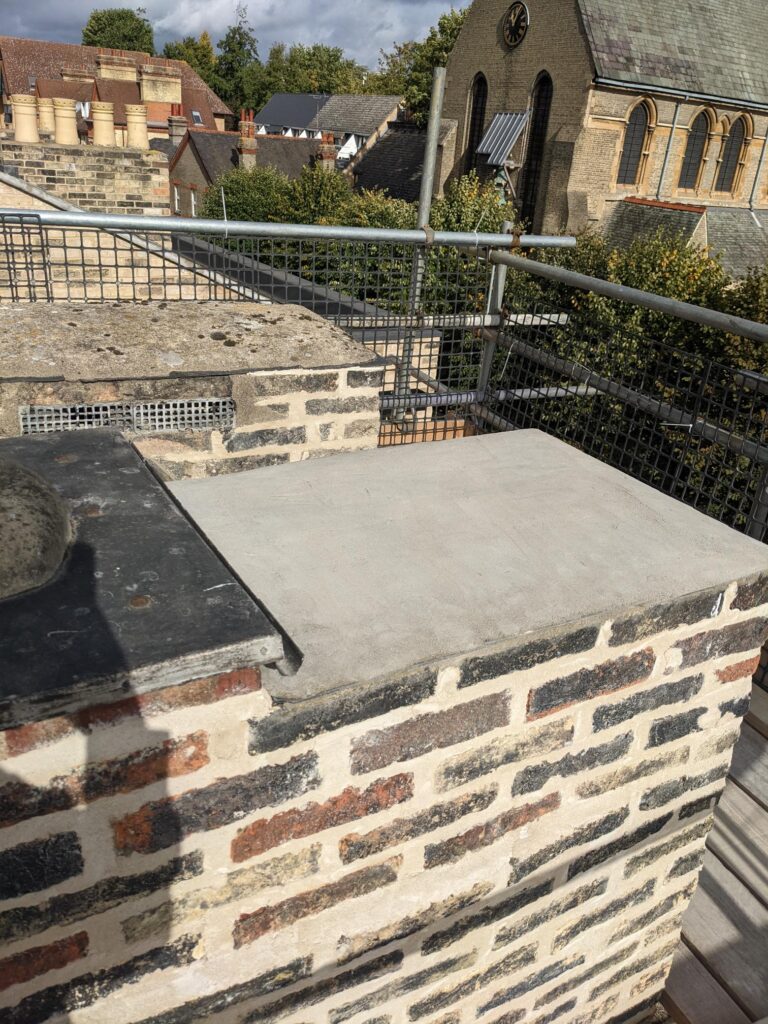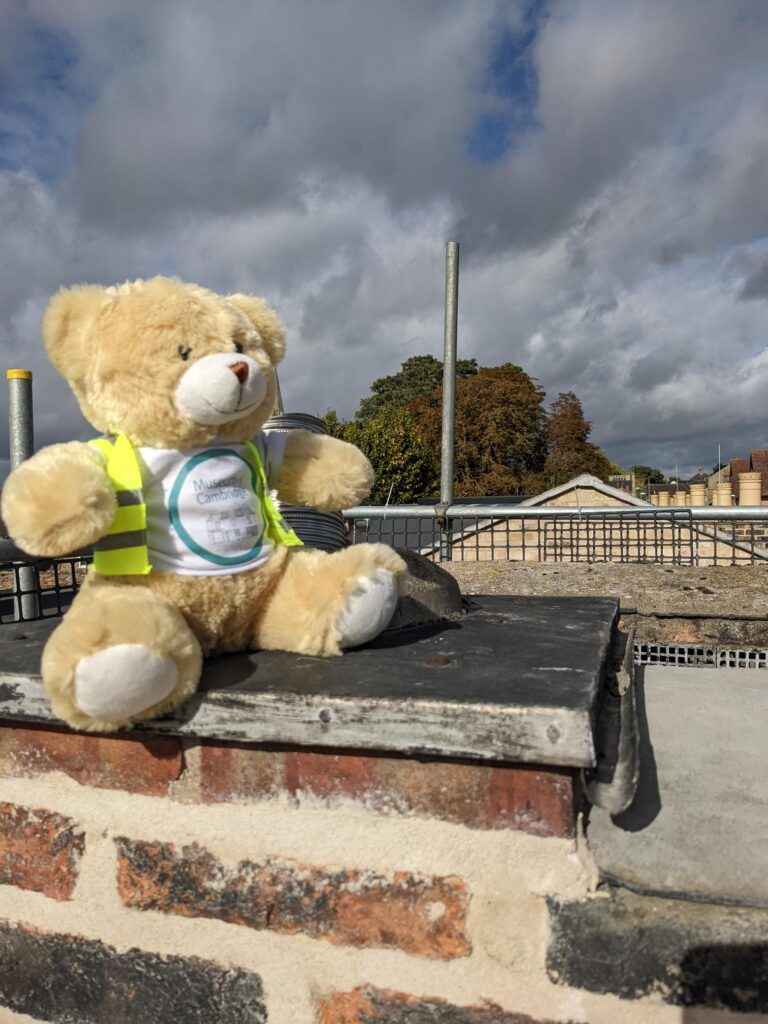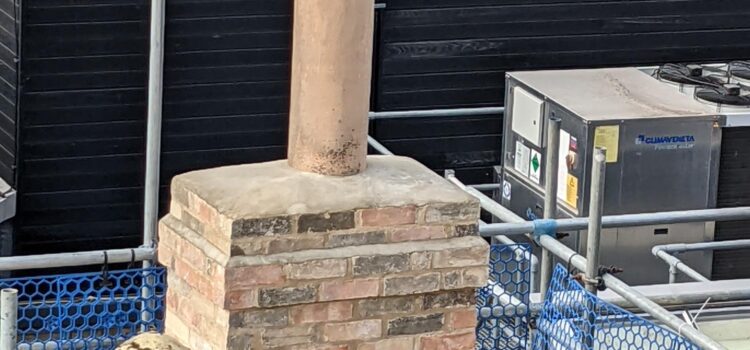The Museum of Cambridge sits within the old White Horse Inn, a public house until 1934, it was saved from demolition and converted into the Cambridge and County Folk Museum. The White Horse Inn can trace its history to about the middle of the 16th century thanks to clues around the building as well as maps and other records. Over the years the footprint of the building has changed, with the addition of a 17th century kitchen and other building extensions.
A grade II listed building means it is looked after to preserve its façade and historic features. Over many years repairs, replacements and maintenance have kept our 400 year old building in tip top shape. We are currently working on another series of repairs and maintenance to the White Horse Inn and we’d love to tell you all about what we’ve learned and discovered along the way.
First on our list of repairs has been to take care of our two chimney stacks. The main stack is part of the 16th century chimney which runs right to the ground under the museum. The other extends from the 17th century kitchen extension. Both chimneys have had previous repairs. Previously, the mortar that had been used to relay the bricks had cracked and needed to be replaced, along with some of the bricks.
As far as we know, the chimney had been built with Cambridge or Burwell white bricks, so called because of the white gault clay found in Cambridgeshire. Cambridge whites had been made in Cambridgeshire (nearly Ely) for hundreds of years. Even though they don’t look very white now, because of decades of smoke. The bricks in the larger chimney were mostly hand-made bricks. This means that replacements bricks are extremely difficult, (and expensive) to come by. Thankfully, the second chimney above the kitchen that was due to be completely rebuilt was almost entire made out of the same hand-made bricks.
Work started early September, with removing the pointing and bricks to the main chimney stack. Old incorrect cement mortar and even older lime mortar was scraped away using hand tools, loosening the bricks to the chimney.
Eventually the second rung of scaffolding was raised. After removing a very thick layer of cement render which was a very messy job, the bricks were removed one by one. These were then taken across the courtyard to fill in the missing pieces of the main chimney stack. Work quickly finished as everything was mortared in place and a cap stone put back on.
For the newer chimney the work had just begun, and the bricks were removed right to the roof line, uncovering a very historic whole in the roof which had been hidden under the cement mortar! All taken care of, and the chimney rebuilt using modern bricks, the chimney pot which is about 1.5 meters long and weights nearly 30kgs was placed back on top, finishing off the look.
The work done will keep the museum safe from the elements, prolong the life of our chimneys for many more decades to come. Even after 400 years, the White Horse Inn is still in great shape and we can’t wait to keep looking after in long into its future.
If you’d like your own piece of Cambridge’s history, you can take home a brick from the Museum of Cambridge for a small donation. Check out our shop for more details!
